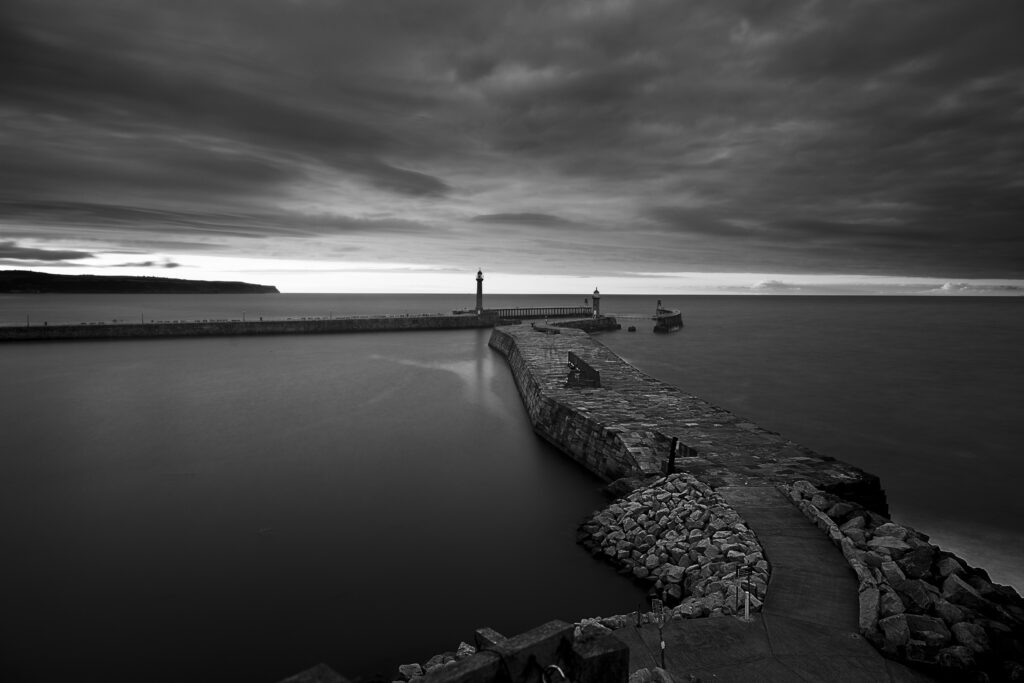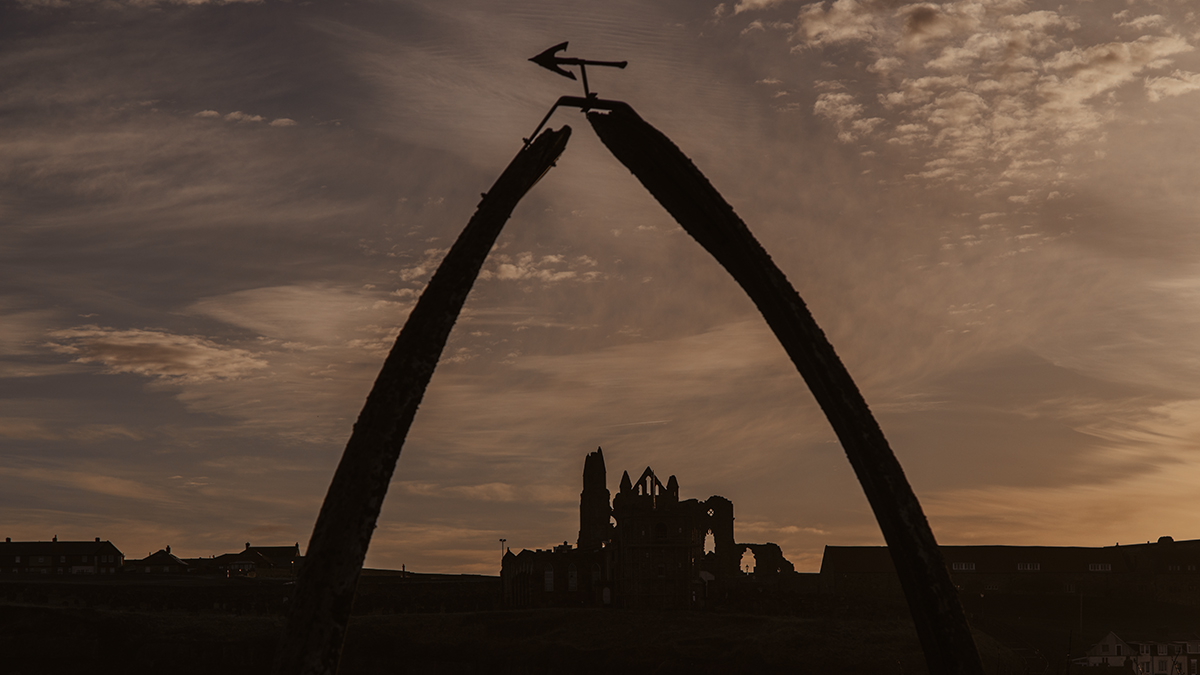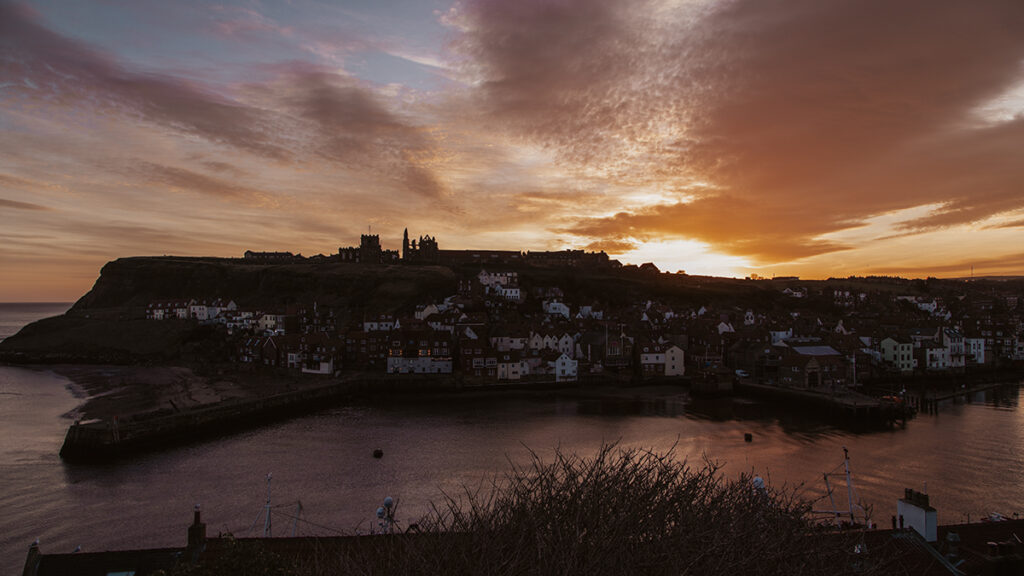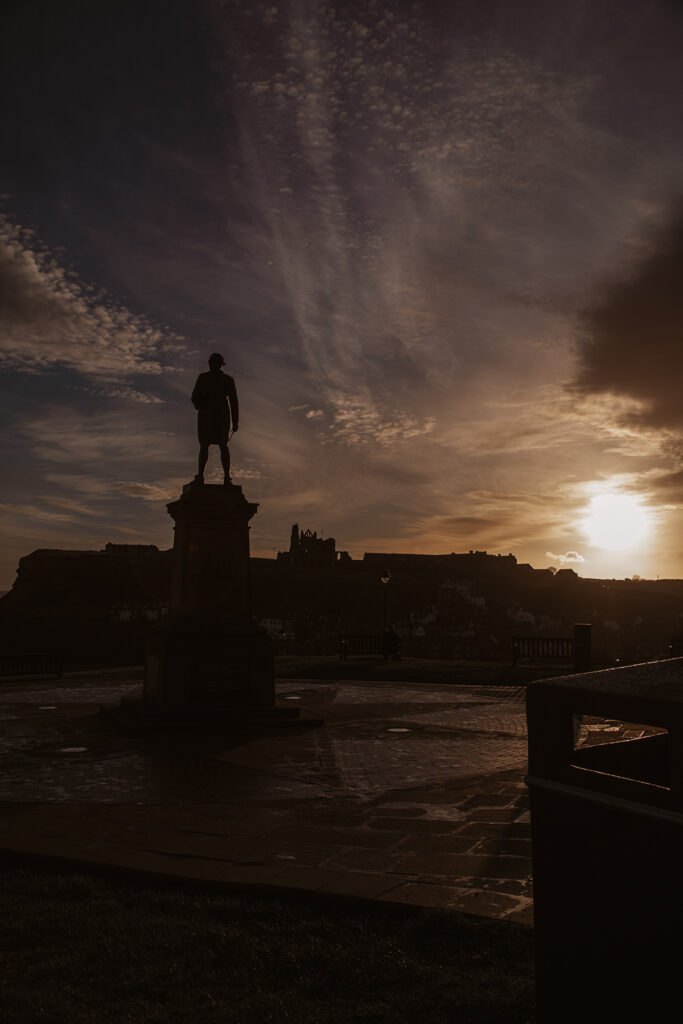Whitby Through the Lens: A Comprehensive Guide to Photographing Yorkshire’s Iconic Coastal Town
The Allure of Whitby for Photographers
Perched dramatically on the North Yorkshire coast, Whitby stands as one of England’s most visually captivating seaside towns. Its unique combination of Gothic architecture, maritime heritage, and rugged coastal landscapes creates an inexhaustible source of photographic opportunities. What makes Whitby truly special is how these elements interact with the ever-changing coastal light, creating scenes that transform dramatically with the seasons, weather, and time of day.
The town’s visual narrative spans centuries—from the commanding ruins of the 7th-century abbey overlooking the town to the bustling harbor filled with working fishing vessels. This rich tapestry of history and living culture offers photographers an unparalleled diversity of subjects within a remarkably compact area.

Prime Photography Locations in Whitby
Whitby Abbey: Gothic Grandeur at Dawn and Dusk
The haunting ruins of Whitby Abbey represent one of Yorkshire’s most iconic photographic subjects. Perched high on the East Cliff, these ancient stones have witnessed over 1,300 years of history and famously inspired Bram Stoker’s Dracula. The abbey photographs magnificently throughout the day, but truly comes alive during the golden hours.
Optimal Shooting Conditions:
- Clear or partially cloudy mornings for dramatic backlighting through the abbey’s skeletal windows
- Misty autumn mornings when fog rolls in from the North Sea, creating an ethereal atmosphere
- Winter afternoons when the low sun casts long shadows across the grounds
- Stormy skies that enhance the Gothic mood and dramatic setting
Technical Approach:
- Wide-angle compositions (my Canon EF 24mm f/1.4L II USM is perfect) capture the scale and architectural details
- Bracketed exposures help manage the extreme dynamic range between bright sky and shadowed stonework
- Consider using graduated ND filters from the LEE100 Deluxe Kit to balance exposure between sky and foreground
- Black and white conversion often enhances the abbey’s dramatic textures and form
Composition Tips:
- Use the abbey’s distinctive windows as natural frames for the town and harbor below
- Include the gravestones of St. Mary’s churchyard in foreground compositions
- Shoot through archways to create depth and visual interest
- Incorporate the 199 Steps as a leading line toward the abbey
The 199 Steps: History’s Stairway
The famous 199 Steps connecting the lower town to St. Mary’s Church and the abbey provide not only historical interest but also exceptional compositional opportunities. These ancient stairs have guided pilgrims, fishermen, and now photographers up the steep East Cliff for centuries.
Best Shooting Times:
- Early morning when the steps are empty of visitors
- Golden hour when side-lighting creates texture on the worn stone steps
- Blue hour when the town’s lights begin to illuminate below
- After rainfall when the wet stones reflect ambient light
Creative Approaches:
- Shoot from the bottom looking up to emphasize the journey and challenge
- Capture from above to show the winding path down to the harbor
- Use a telephoto lens to compress the steps and emphasize repetition
- Include people climbing for scale and human interest
Whitby Harbor and Swing Bridge: The Heart of Town
The working harbor remains Whitby’s vibrant center, with the pivoting Swing Bridge connecting the east and west sides of town. This area combines historical architecture, maritime activity, and constantly changing light conditions.
Prime Photography Opportunities:
- Dawn reflections in still harbor waters
- Blue hour when town lights create colorful reflections
- Foggy mornings when boats emerge mysteriously from the mist
- High tide when water levels create perfect reflections of harborside buildings
Technical Considerations:
- Tripod-mounted long exposures smooth water movement and capture light trails
- Polarizing filters help manage reflections and enhance colors
- Graduated ND filters balance bright skies with darker foreground elements
- Consider bracketing exposures in challenging lighting conditions
Composition Strategies:
- Use the Swing Bridge as a leading line drawing the viewer into the frame
- Frame shots through harbor arches and between moored boats
- Include fishermen and working boats for authentic maritime atmosphere
- Look for symmetry in bridge and building reflections
West Pier and Lighthouses: Coastal Engineering as Art
Whitby’s twin piers extend like protective arms into the North Sea, with the West Pier culminating in a distinctive lighthouse. These structures provide strong geometric elements and compelling focal points against the ever-changing sea.
Optimal Conditions:
- Stormy weather when waves crash dramatically against the pier
- Sunrise when the eastern light illuminates the lighthouse
- Low tide revealing textured foreshore and reflecting pools
- Blue hour when the lighthouse beam becomes visible against deepening blue skies
Technical Approach:
- Long exposures (using ND filters) smooth water movement around pier structures
- Wide-angle compositions capture the sweeping curve of the pier
- Telephoto compression emphasizes patterns of waves breaking against the structure
- Consider using a 6-stop ND filter (Little Stopper) for moderate water smoothing or a 10-stop (Big Stopper) for complete water flattening
Safety Considerations:
- Always check tide times before venturing onto the piers
- Be cautious during stormy conditions when waves can wash over pier structures
- Protect equipment from salt spray which is inevitable when shooting in these locations

East Cliff Panoramas: The Classic Whitby Vista
The view from West Cliff across to East Cliff encompasses the entire Whitby experience in one sweeping panorama—harbor entrance, piers, the huddled old town, 199 Steps, St. Mary’s Church, and the abbey ruins crowning the cliff.
Best Vantage Points:
- Near the Captain Cook Monument for elevated harbor views
- Khyber Pass for unobstructed views of the East Cliff profile
- West Pier for low-angle perspectives looking back toward town
Optimal Timing:
- Blue hour when town lights create a warm contrast against the deepening sky
- Foggy mornings when the abbey emerges from mist
- Clear evenings when the setting sun illuminates the West-facing cliff face
Technical Considerations:
- Panoramic sequences may require multiple images stitched in post-processing
- A telephoto lens compresses the scene’s elements into a harmonious composition
- Graduated ND filters help balance bright sky with darker foreground elements
Seasonal Variations in Whitby Photography
Summer Highlights
- Extended daylight hours but earlier sunrise times requiring very early starts
- Bustling harbor scenes with peak tourist activity
- Dramatic evening light lasting well into late evening
- Potential for summer storms creating dynamic light conditions
Autumn Advantages
- Morning sea mists creating atmospheric conditions around the abbey
- Quieter streets allowing cleaner architectural compositions
- More dramatic skies and storm conditions
- Reasonable sunrise times around 7am
Winter Opportunities
- Dramatic low light throughout the day creating extended golden hours
- Possibility of snow transforming familiar scenes
- Stormy seas showcasing the power of the North Sea
- Quietest period with minimal tourists
Spring Possibilities
- Wildflowers adding foreground interest on cliff tops
- Increasing daylight with pleasant temperatures
- Variable weather creating a range of shooting conditions
- Good balance of tourist activity and quieter moments
Technical Essentials for Whitby Photography

My Equipment Recommendations
Based on extensive experience photographing Whitby in all conditions, I’ve refined my equipment choices to handle the unique challenges of this location:
Camera: Canon EOS 5D Mark IV The weather-sealed body handles coastal conditions admirably while its excellent dynamic range captures both shadow detail in the abbey ruins and highlight detail in bright skies.
Primary Lens: Canon EF 24mm f/1.4L II USM This fast, sharp prime lens delivers exceptional image quality for Whitby’s architectural details and expansive landscapes. Its bright maximum aperture proves invaluable in low-light conditions like dawn and dusk.
Support: Benro 3 Carbon Fiber TTOR35C GX35 A sturdy yet lightweight tripod is essential for Whitby photography, especially for long exposures along the harbor and piers. Carbon fiber construction resists corrosion from inevitable salt exposure.
Filtration: Lee Filters LEE100 Deluxe Kit Plus Complete control over exposure is critical in Whitby’s challenging lighting conditions. Graduated ND filters balance bright skies with shadowed foregrounds, while solid ND filters enable creative long exposures of harbor waters and breaking waves.
Essential Accessories
Weather Protection:
- Rab Mythic Ultra jacket for lightweight insulation
- Rab Cinder Downpour jacket for waterproof protection
- Rab Baltoro Gloves for maintaining dexterity in cold conditions
- Waterproof footwear with excellent grip for navigating wet harbor walls and slippery steps
Additional Tools:
- Headlamp for navigating the 199 Steps in pre-dawn darkness
- Lens cleaning supplies to combat inevitable salt spray
- Extra batteries (cold coastal winds drain power rapidly)
- Mobile phone with tide apps for safety around harbor areas
Practical Tips for Whitby Photography Success
Timing Your Visit
Tide Considerations:
- Low tide reveals fascinating foreshore textures and reflective sand
- High tide brings water to harbor walls, creating perfect reflections
- Incoming tide creates dramatic wave action against the piers
- Always check tide tables before planning harbor and pier photography
Avoiding Crowds:
- Arrive before 8am to photograph the town center without tourists
- Visit midweek outside school holidays for quieter conditions
- Winter months offer the most solitude for unobstructed architectural shots
- Early morning provides the best combination of light and minimal people
Creative Approaches
Embrace Whitby’s Gothic Heritage:
- Look for moody, atmospheric conditions that complement the abbey ruins
- Incorporate elements that reference the Dracula connection
- Use dramatic lighting to enhance the town’s mysterious character
- Consider black and white conversion to emphasize form and texture
Seek Unique Perspectives:
- Explore the narrow “yards” (alleyways) of the old town
- Photograph from harbor boats for water-based perspectives
- Use height variations from the town’s many staircases and elevated points
- Look for reflections in everything from harbor waters to shop windows

Final Thoughts
Whitby offers photographers an exceptionally rich visual environment where history, architecture, and natural beauty converge. The town’s dramatic setting ensures that lighting conditions are constantly changing, transforming familiar scenes with each visit. By understanding the location’s unique characteristics and approaching it with patience and preparation, photographers can create compelling images that capture both the timeless beauty and distinctive character of this remarkable Yorkshire coastal gem.
Whether you’re capturing the Gothic grandeur of the abbey at dawn, the bustling energy of the harbor at midday, or the tranquil glow of the town at blue hour, Whitby rewards photographers who take the time to explore its many facets with truly distinctive images that stand apart from standard tourist snapshots.




